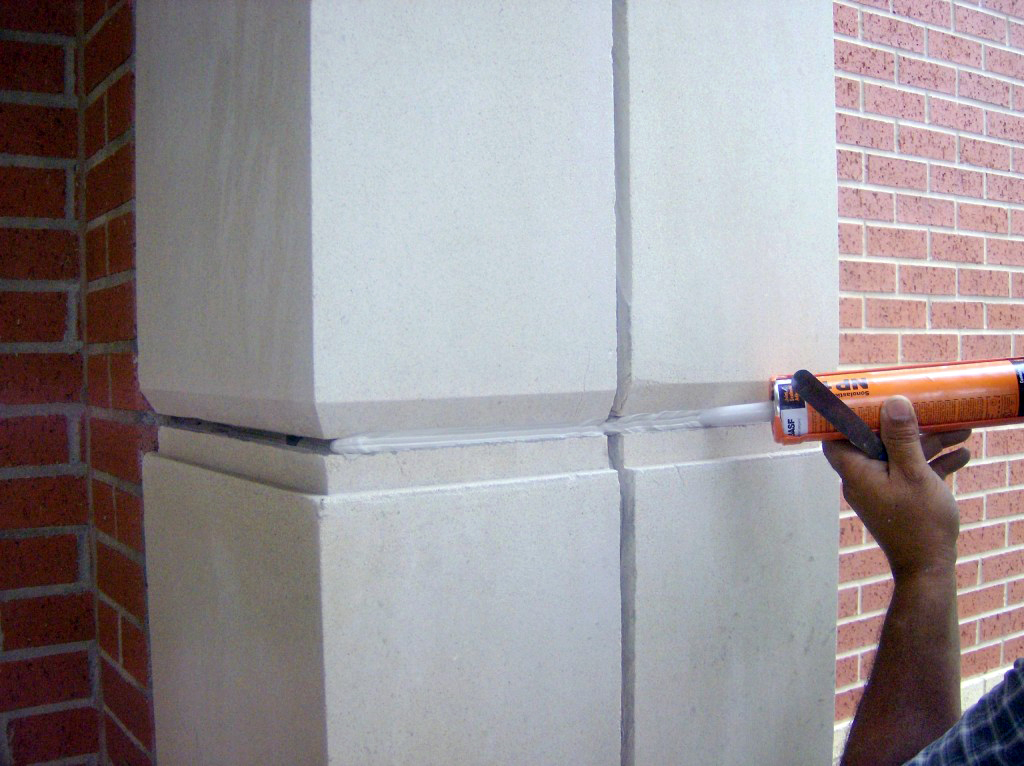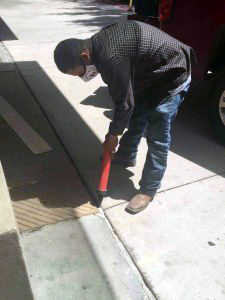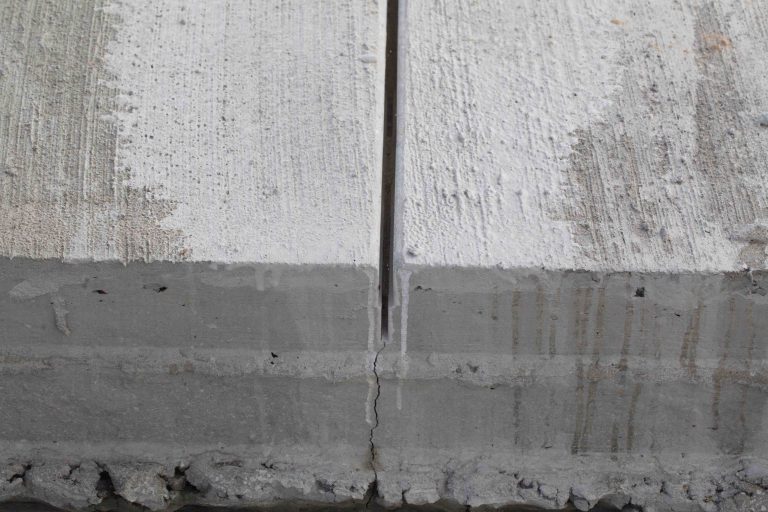The gaps between slabs of concrete on driveways, parking lots, and sidewalks called expansion joints are more critical than most property owners realize. These joints allow concrete segments to expand and contract with temperature and humidity changes throughout the year. Without proper flexibility, the concrete can crack, shift, or deteriorate.
High-Risk Areas That Require Concrete Sealing
In addition to expansion joints within sidewalks, driveways, and parking lots, concrete sealing between walkways and the structural slab of a building are especially important. Neglecting these areas can lead to foundation damage, a far more serious and costly issue than a cracked sidewalk.
Prevent Water Damage with Joint Sealing
To avoid costly repairs, it’s critical to maintain a watertight seal using high-quality caulking materials. When left unsealed or when old caulking fails, water can seep beneath the surface—leading to heaving, sinking, or crumbling concrete over time.
Most expansion joints are filled with one of two different products — redwood or a flexible sealant caulking. Redwood joints are more common in residential properties due to their favorable aesthetic appearance and are effective at protecting the concrete by absorbing the moisture around the joint. The flexible sealant is a rubber looking substance that is made to self-level in the joint once applied and includes characteristics like remaining permanently flexible, quick drying, able to bond to anything and offers high weather resistance.
Looking for trusted concrete caulking contractors near me?
Contact C & D Commercial Services for expert caulking services and concrete sealing in Dallas, Fort Worth, and surrounding areas.
Signs You May Need Caulking Replacement
If you’re unsure whether your caulking needs to be replaced, here are key indicators:
- Loose or detached caulk hanging from joints
- Split or separated sealant exposing gaps
- Missing or completely exposed expansion joints
- Rotting or splintered redwood filler
These are common signs noticed by experienced caulking contractors, but they’re often missed by everyday property managers or owners.
How Expansion Joint Repair Works
Step 1: Remove Old Caulking or Redwood
The first step in concrete expansion joint repair is to remove failed material. This prepares the joint for a new application.
Step 2: Clean and Prep the Joint
The joint is cleaned using a shop-vac or stiff brush to remove debris, followed by the insertion of a backer rod.
What is a Backer Rod?
A backer rod is a round, flexible foam that:
- Controls the depth of the sealant
- Enhances elasticity of the caulking
- Promotes superior side-to-side bonding (hourglass shape)
- Makes future resealing easier and cleaner
If expansion joint failure leads to multiple cracks, professional repair is required before further damage occurs. In some cases, a crack chasing saw or hand chisel is used to widen fractures to ¼”, followed by:
- Self-leveling caulk for smaller cracks
- Epoxy fillers for deeper, wider damage
Proper crack chasing and repair can extend the life of your concrete surfaces significantly.
While failing concrete is inevitable, it can be delayed significantly with regular monitoring and professional caulking services. Commercial and residential property managers who stay ahead of maintenance needs especially around expansion joints can prevent structural damage and expensive repairs down the road with the help of our caulking contractor.
Vertical caulking is a specialized caulking services performed on building walls commonly in masonry, concrete, or tilt-wall construction. Since materials like concrete and brick naturally expand and contract with temperature changes, expansion joints are installed to prevent structural stress, cracking, and bowing.
Over time, especially on south- and west-facing walls, caulk begins to degrade from prolonged exposure to sunlight. Failing caulk can lead to water infiltration behind the building envelope, causing mold, material deterioration, and expensive structural damage.
As trusted commercial caulking contractors, we recommend having your building’s vertical expansion joints inspected around the 15-year mark. Our team uses high-performance urethane sealants like BASF MasterSeal NP1 or NP2 to replace damaged caulking.
Sometimes, expansion joints were never installed where needed—either in masonry or concrete pavement. This oversight can result in bowing walls, shifting door frames, cracking surfaces, and even water infiltration.
As leading expansion joint installation contractors, we can assess your site and add expansion joints where necessary. This involves precisely cutting the joint and sealing it with industry-grade caulking to address existing problems and prevent future damage.
Whether you manage a commercial facility or a multi-unit property, trust our team for expert caulking services designed for durability and compliance.
What are Expansion Joints, and why is sealing them important?
Expansion joints are gaps between concrete slabs that allow for natural expansion and contraction due to temperature and humidity changes. Properly sealing these joints prevents moisture from seeping underneath, which can lead to issues like heaving, sinking, or crumbling of the concrete. Maintaining these seals is crucial for the longevity of structures like driveways, sidewalks, and parking lots.
What kind of caulk do you use on concrete?
For concrete surfaces, we use urethane-based caulking like BASF MasterSeal SL1, SL2, NP1, or NP2, which are known for their flexibility, durability, and weather resistance. These are ideal for both horizontal and vertical expansion joints on driveways, sidewalks, and building exteriors. Learn more about our concrete caulking services here.
What is Masonry Caulking?
Masonry Caulking involves sealing joints or cracks in materials like brick, block, or stone to prevent moisture intrusion, energy loss, and structural damage. At C & D Commercial Services, we specialize in masonry and concrete caulking services for commercial buildings, ensuring long-lasting protection using premium-grade sealants.
What is the best sealant for gaps in concrete?
The most effective sealant for gaps in concrete is a self-leveling urethane sealant, such as MasterSeal SL1 or SL2. These sealants are commonly used by concrete caulking contractors to protect expansion joints in parking lots, sidewalks, and driveways from water intrusion and long-term damage.
How can I tell if my concrete caulking needs replacement?
Signs that your caulking may need replacement include loose or hanging caulk, separated caulking that has split open, completely exposed joints, or broken and rotted redwood fillers. Regular inspections can help identify these issues early, preventing more significant damage.







